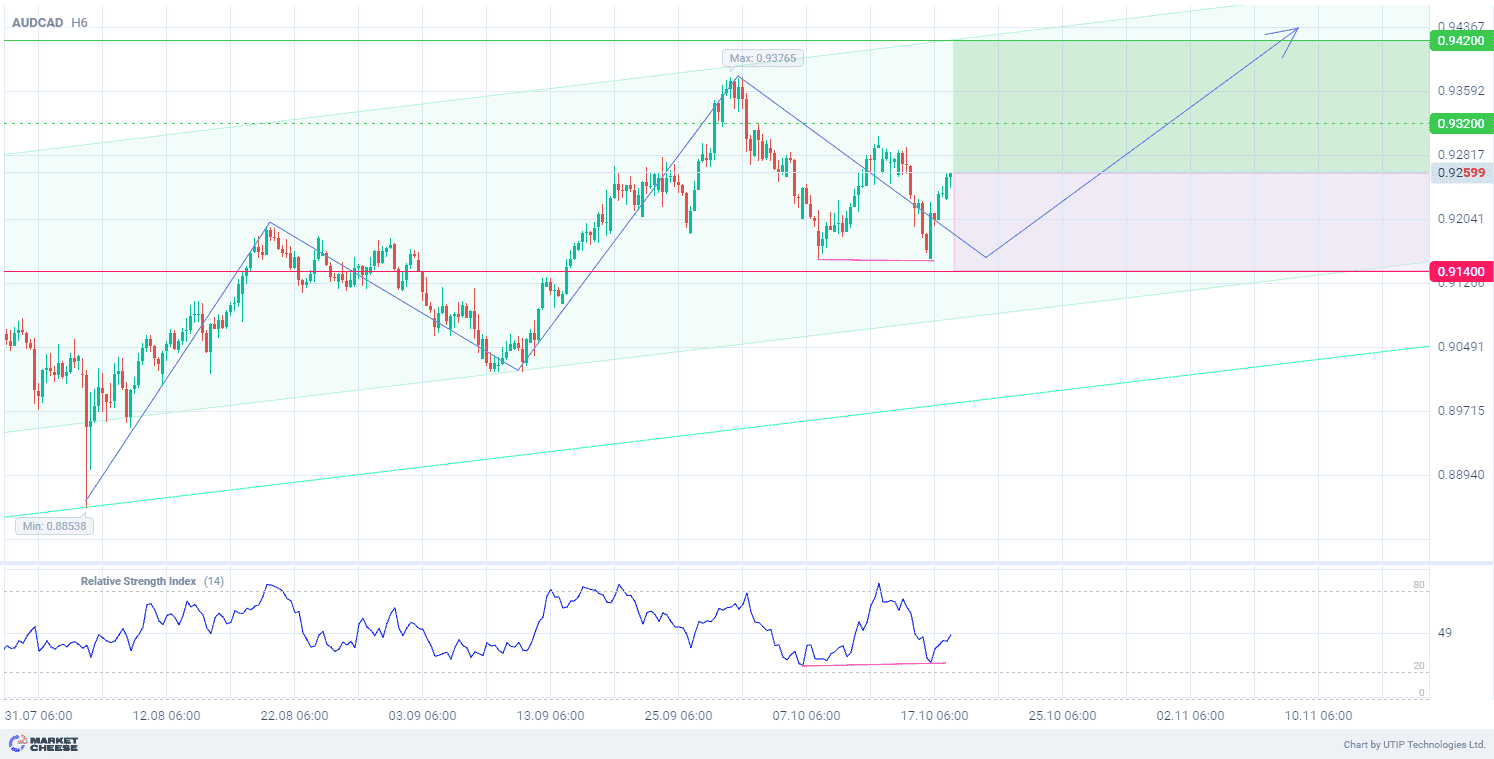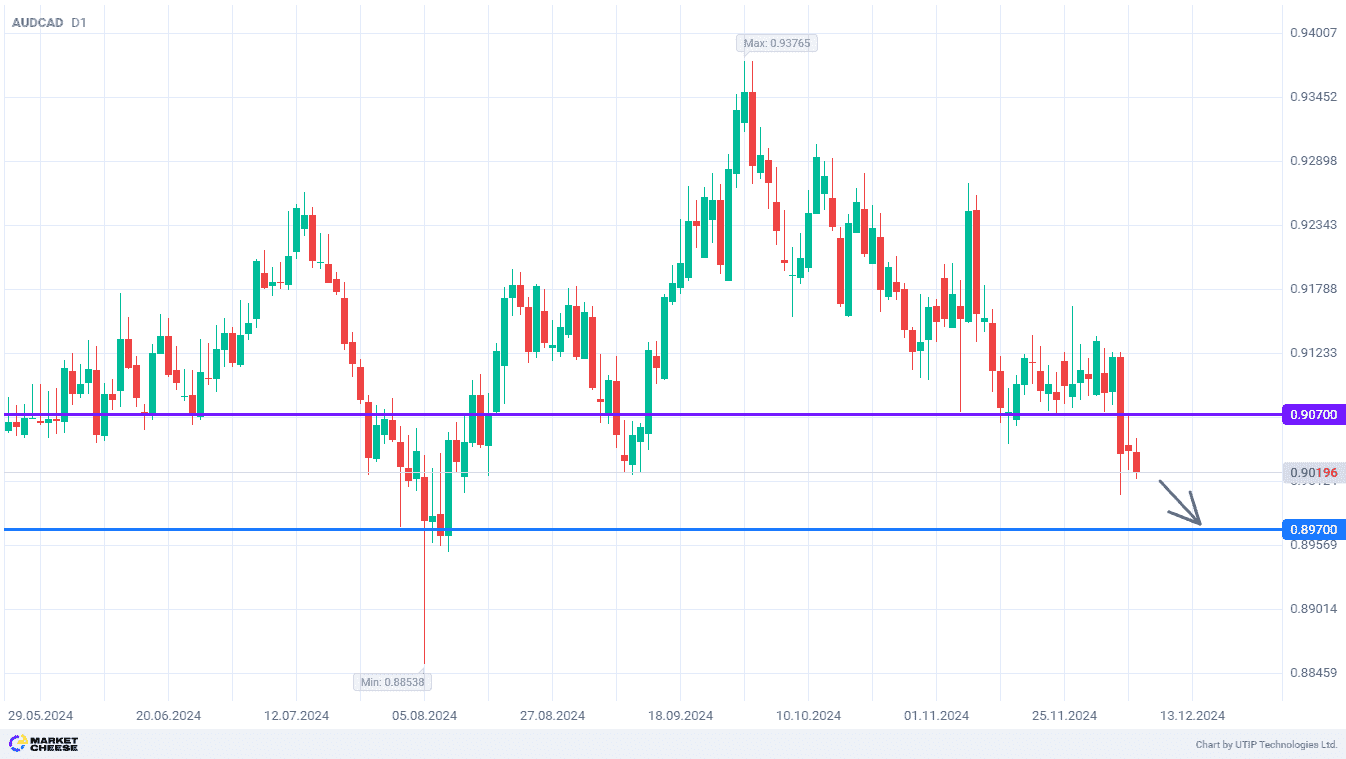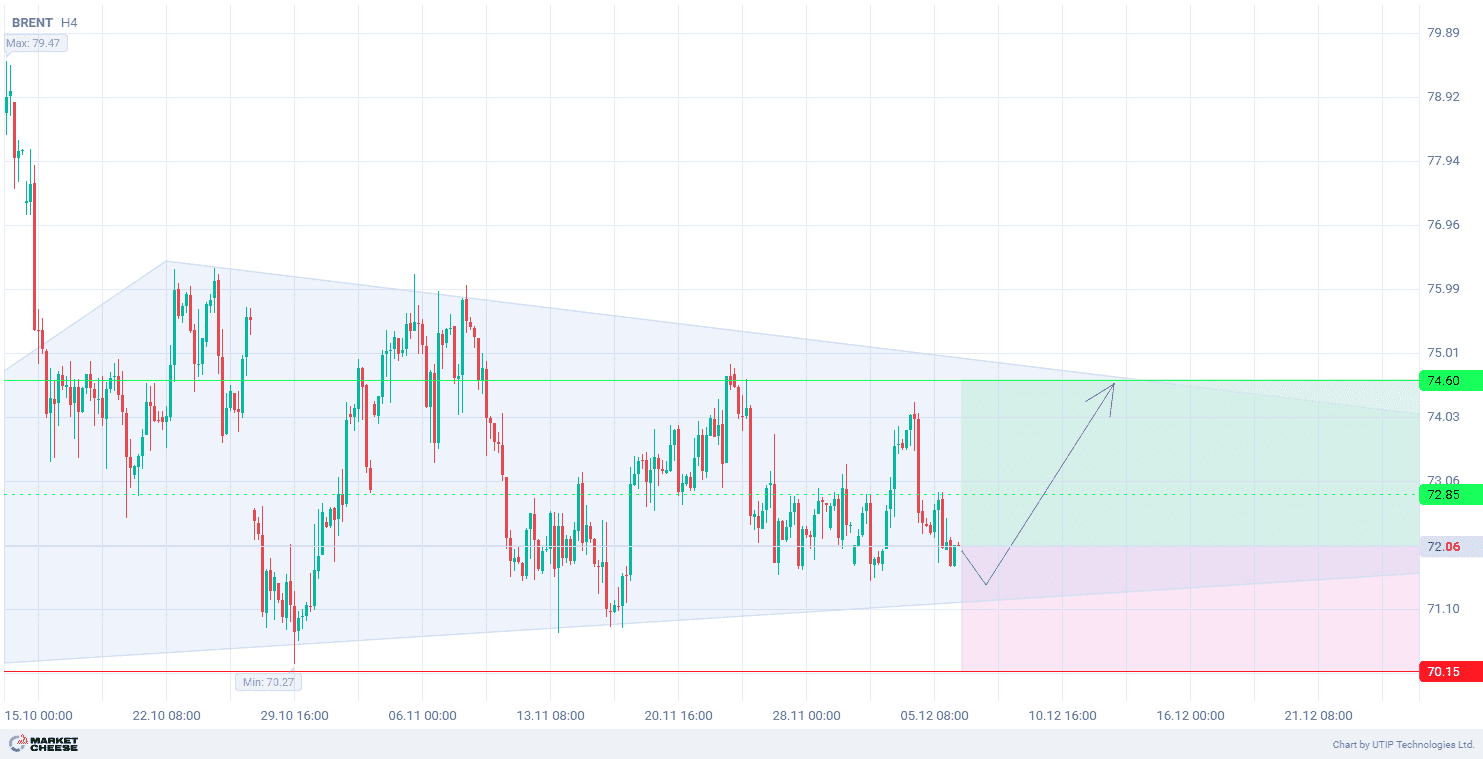On Friday, the AUDCAD currency pair showed an increase. This was caused by stronger than expected data on employment in Australia, published on Thursday. These indicators reduced the expectations of market participants regarding the possible reduction of the interest rate by the Reserve Bank of Australia (RBA) this year.
Additional support for the Australian dollar was provided by the confirmation of interest rate cuts in China, Australia’s largest trading partner. Chinese banks, including Industrial Commercial Bank, Bank of Communications, and China Merchants Bank, announced a 25 basis point rate cut. As the Chinese government expects, this measure will stimulate domestic economic activity. This, in turn, may increase demand for Australian exports.
On the other hand, the likelihood of the Bank of Canada accelerating its monetary policy easing amid the latest inflation data is putting pressure on the Canadian dollar. As previously reported by the country’s statistics office, the consumer price index (CPI) rose 1.6% year-on-year in September, marking the slowest pace since February 2021. However, geopolitical tensions in the Middle East could cause oil prices to rise. This will support the Canadian currency, as Canada is one of the largest oil exporters to the US.
Technical analysis of AUDCAD on the D1 timeframe shows the formation of an uptrend. Wave analysis indicates the formation of the fourth downward corrective wave on the H6 timeframe. However, the Relative Strength Index (RSI) divergence (standard parameters) signals a possible reversal towards growth and initiation of the fifth wave formation.
Short-term prospects of the AUDCAD currency pair suggest buying, with the target at the level of 0.9420. Partial profit taking is recommended near 0.9320. The loss limitation level is set at 0.9140.
Since the bullish trend is of a short-term nature, the trading volume should not exceed 2% of the total balance to reduce risks.










